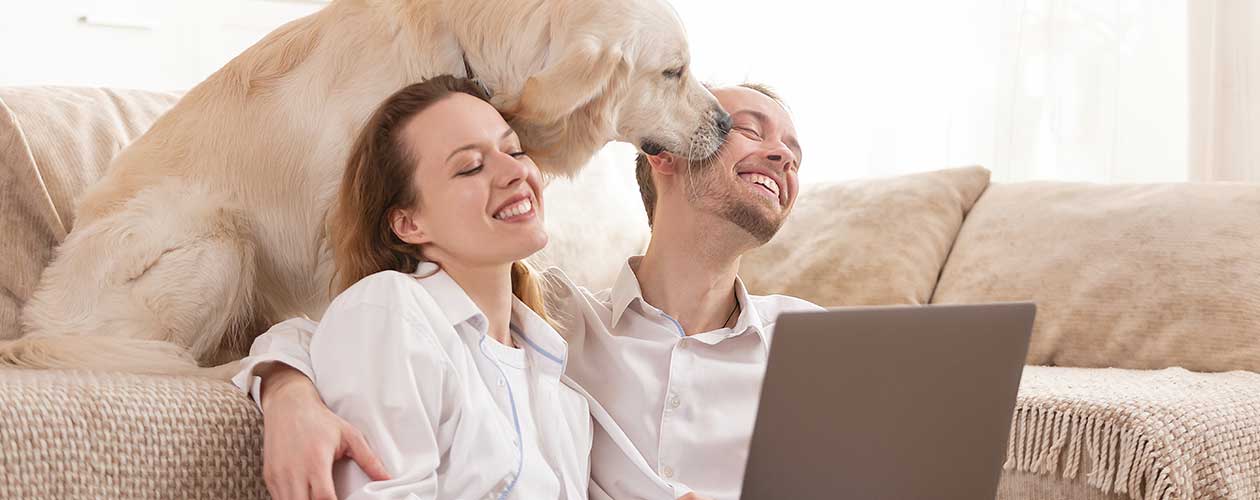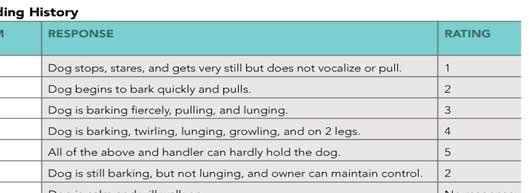How To Help Dogs that are Anxious or Aggressive During Leash Walking
Walking dogs can be one of the joys of pet ownership, with benefits for both people and dogs. It can increase owner—pet bonding through engagement in an activity together. Unfortunately, too many dog owners are unable to take their dogs for walks due to unwanted behaviours while on a leash, including barking, pulling, jumping, growling, and attempting to bite people and other dogs.
Causes –
Causes of aggression are varied, yet the underlying motivation for the dog is usually fear or anxiety—not a desire to be dominant or control. These behaviours make walking difficult and, over time, the owner tries to control the dog by tightening or jerking the leash and sometimes using either verbal or physical punishment (yelling or smacking). Unfortunately, the owner’s reactions to the unwanted behaviour is likely to increase rather than decrease the dog’s emotional arousal. Punishment also increases anxiety and fear, and the dog associates being punished with the presence of unfamiliar people or dogs, further increasing tension. Previous adverse events on walks may also be contributory, such as unwanted encounters with people, fights with other dogs, or lack of proper socialization or social skills.
TREATMENT
Before starting treatment, please rate your dog’s behaviour on the scale below – this rating is useful to assess response to treatment.
In the initial stages of treatment –
All situations that cause the behaviour to occur must be avoided, especially in the early stages of treatment. When the dog engages in the behaviour repeatedly, this reaction becomes ‘ingrained’, allowing the response to occur faster and earlier each time.
If the only way for the dog to toilet is during a walk, these walks must be arranged at times and places when and where encountering people and/or other dogs is less likely.
However, if other people and/or dogs are seen, you should increase the distance between the dog and the stimulus. Crossing the street, turning around and walking the other way, or even stepping behind parked cars to block the view of the oncoming stimulus can be utilized. At no time should you try to approach other people or dogs, or force any encounters.
BEHAVIOUR MODIFICATION STRATEGIES
Treatment focuses on 3 areas:
1. Counter conditioning when approached by people and/or dogs
2. Systematic desensitization to people and/or dogs
3. Increasing control and ability to leave potentially aggressive situations.
Dogs’ brains can be thought of existing in 2 states – their ‘fear’ brain and their ‘happy, relaxed’ brain. Dogs are physically incapable of learning new behaviours when dogs are using their ‘fear’ brains, therefore while we are undertaking behavioural modification training, dogs must always be in a calm state of mind.
Do Not Use Punishment
Emotions such as fear, anxiety, or aggression cannot be solved with punishment!!
Foundation Exercises Before Training on Walks
Foundation exercises outlines the baseline training that must be in place prior to attempting counter conditioning.
- Getting your dog’s attention. Teach the dog to look at you using a phrase, such as “watch me” or “focus.” A leash and head collar can be used for additional control and a treat can be held up near your face to get your dog’s attention. The task is first practiced in neutral, quiet surroundings until well performed, and then distractions can slowly be added. Initially, the dog is rewarded for eye focus and small signs of relaxation by quickly administering the treat. As the dog begins to understand the task, it will show more signs of relaxation and stay relaxed for longer periods of time.
The goal of this step during training is to maintain eye contact with the pet for several minutes, while it remains neutral, calm, and relaxed. - Leaving a fearful situation. The dog is taught a phrase, such as “let’s go” or “follow me”; then turned 180 degrees and briskly walked in the other direction. This should be performed quickly, but without anxiety or tension. Initially, treats are used to lure the dog to follow and execute the turn. Again, this is first practiced in a quiet location, allowing a quick and reliable response each and every time.
The goal of this step during training is to diminish the dog’s response to a stimulus by increasing the distance between the dog and the stimulus.
All of these steps must be in place before classical counter conditioning training on a walk can begin. Again, while this pre-training takes place, the stimuli known to cause the problem behaviour must be avoided. The dog should be able to focus, and then leave on command, before you begin counter conditioning.
Counter Conditioning
Counter conditioning means changing the underlying emotional state of the dog to help change outward behaviour. The goal of classical counter conditioning is to teach the dog to associate the presence of unfamiliar people or dogs with something pleasant.
To change an underlying emotional state, you must offer the pet something enticing that evokes a (hopefully) happier response. These “rewards” are usually treats that the dog finds especially enticing. Extremely desirable rewards are saved only for training and conditioning sessions and are withheld at other times.
If a dog does not respond to their rewards at any time during the training, then the stimulus is too intense. All dogs are not likely to eat if they are anxious or frightened. If you are unable to get your dog to relax and focus, even at home in a calm location, you may need help from a trainer who uses positive reinforcement techniques, or even anti-anxiety medication to allow your dog to relax and learn.
Systematic Desensitization
Desensitisation is a begins when people (or other dogs) are far from the dog, where the dog is reliably able to maintain calm and relaxed behaviours. Gradually, the dog is exposed to people and/or dogs at closer distances. It is best if you can recruit a friend or neighbour with a calm, patient dog to help work with you during your training.
Increased Control During Walks
It is important for you to humanely and properly keep control of your pet. Leashes are absolutely necessary (avoid retractable leashes), and the use of harnesses or head collars, such as the Gentle Leader or Halti are strongly recommended. Choke collars and pinch collars are never recommended – they cause pain and discomfort, which results in the dog forming an aversive association with the situation.
Keep Initial Sessions Simple
Initial sessions begin with your friend and their dog at a distance where little or no response is noted (1/5 on response scale), and the highly desired treat readily available. Ask your dog to “focus” (look at you) and then feed the treat regardless of what your dog does (it can look at the stimulus as long as the behaviour does not progress to lunging or barking). Ideally the dog should focus as requested, but if the dog does not look at you, but remains calm (no lunging, barking, pulling, etc), then the reward is the classical part of the conditioning, associating something good with the stimulus, and should be given.
As the stimulus comes closer to the spot where undesirable behaviour is going to begin (2/5 on response scale), you must quickly but calmly put away the food; then exit the situation using the “let’s go” command. Several repetitions at the same distance are completed before decreasing the space between your dog and the stimulus. In order to progress to the next step (stimulus is closer), the dog must remain calm; if the behaviour is escalating as the stimulus approaches, the dog is not learning the proper association and a larger distance is advisable. The time to achieve this varies between dogs so patience is important. Quickly progressing through the distances does not allow the proper learning to occur.
Avoid Reactive Behaviour
You must not attempt to stay longer than the dog can remain calm and focused. If the dog becomes reactive, you must immediately leave with the dog and future sessions must progress more slowly & with the other dog at a greater distance away. You and your dog may need to be quite a distance away from the stimulus to keep the dog calm and controlled. Remember, the dog learns best when calm.
Limit the Training Session
Each session should end on a positive note. If the dog does extremely well in a given training session, end the session immediately with a big reward to mark the good behaviour. This treatment regimen can often help decrease the arousal level, allowing the dog to be controlled during the situation.
After weeks to months of training, your dog may eventually become willing to approach people or other dogs, but for others, it is acceptable that the dog walks calmly but still does not wish to greet any person or dog. In most cases, it is advisable to avoid greeting people or dogs on walks even if the dog is not displaying undesirable behaviour. Remember, what you are trying to teach the dog is that it does not need to worry.
A final note….
If you are having difficult undertaking these training sessions yourself, then you may need further help. Figtree Veterinary Clinic is always available for advice, and some patients may require anti-anxiety medications in order to allow them to relax into their ‘calm learning’ brain. However in many cases it may be best to have somebody present with you during your training to provide reassurance and advice. The best option is to book a home visit from a veterinary behaviourist – two behaviourists that we recommend include:
- Life on Four Legs – com.au
- Vet Behaviour Team – vetbehaviourteam.com
The second option is to use a postitive re-inforcement trainer e.g. Let’s Go Fido Dog Training – http://letsgofido.com.au



